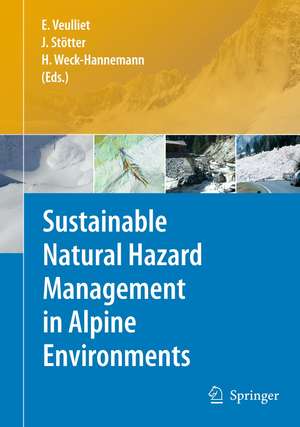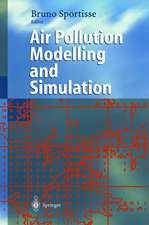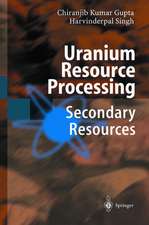Sustainable Natural Hazard Management in Alpine Environments
Editat de Eric Veulliet, Stötter Johann, Hannelore Weck-Hannemannen Limba Engleză Hardback – 13 oct 2009
| Toate formatele și edițiile | Preț | Express |
|---|---|---|
| Paperback (1) | 950.33 lei 6-8 săpt. | |
| Springer Berlin, Heidelberg – 20 noi 2014 | 950.33 lei 6-8 săpt. | |
| Hardback (1) | 954.45 lei 6-8 săpt. | |
| Springer Berlin, Heidelberg – 13 oct 2009 | 954.45 lei 6-8 săpt. |
Preț: 954.45 lei
Preț vechi: 1163.97 lei
-18% Nou
Puncte Express: 1432
Preț estimativ în valută:
182.63€ • 190.68$ • 151.15£
182.63€ • 190.68$ • 151.15£
Carte tipărită la comandă
Livrare economică 05-19 aprilie
Preluare comenzi: 021 569.72.76
Specificații
ISBN-13: 9783642032288
ISBN-10: 3642032281
Pagini: 420
Ilustrații: XIII, 403 p.
Dimensiuni: 155 x 235 x 30 mm
Greutate: 0.7 kg
Ediția:2010
Editura: Springer Berlin, Heidelberg
Colecția Springer
Locul publicării:Berlin, Heidelberg, Germany
ISBN-10: 3642032281
Pagini: 420
Ilustrații: XIII, 403 p.
Dimensiuni: 155 x 235 x 30 mm
Greutate: 0.7 kg
Ediția:2010
Editura: Springer Berlin, Heidelberg
Colecția Springer
Locul publicării:Berlin, Heidelberg, Germany
Public țintă
ResearchDescriere
In the recent past a marked increase of the damages caused by natural hazard processes has been documented, for example by the Munich Re-Insurance. On a regional scale, a similar development can be observed in mountain regions such as the Alps, where it is particularly a rise in flood events that has caused the maximum amount of economic damage. Three major aspects may help to explain this phenomenon: The changing frequency-magnitude relationship of the natural hazard processes, the multiplication of the damage potential due to the socio-economic change, and the non-adequate way of coping with the changing risk by the official authorities. As a consequence, this book tries to address key questions related to these developments and to give answers to these problems. Question 1: How can the strategies for coping with the rise in extreme flooding be improved? Question 2: How can the damage potential and other socio-economic aspects be quantified? Question 3: How can new computer based technologies contribute to minimizing the risks related to alpine natural hazards? An initial chapter gives an overview of the global change aspects of natural hazards and their related risks. While three chapters outline answers to question 1, four chapters discuss question 2. Five chapters give examples of new technologies.
Cuprins
Global Change and Natural Hazards: New Challenges, New Strategies.- Flood Forecasting for the River Inn.- Runoff and bedload transport modelling for flood hazard assessment in small alpine catchments - the PROMAB model.- Modelling peak runoff in small Alpine catchments based on area properties and system status.- Process-based investigations and monitoring of deep-seated landslides.- Alpine tourist destinations #x2013; a safe haven in turbulent times? #x2013; Exploring travellers#x2019; perception of risks and events of damage.- Protective measures against natural hazards #x2013; are they worth their costs?.- Analysing Decision Mechanisms for Natural Hazard Management.- Alternative Risk Transfer and Alternative Risk Financing.- Risk management.- Laser scanning - a paradigm change in topographic data acquisition for natural hazard management.- Improving Safety in Alpine Regions through a combination of GSM/GPRS with satellite communication, GIS, and robust positioning technology.- Pros and cons of four years experience of alpS.
Recenzii
From the reviews:
“This edited book, which comprises 13 chapters, provides an overview of the projects conducted at alpS–Centre for Natural Hazard and Risk Management during the period 2002-2008. … there is plenty to appeal to those interested in natural hazard management, including the fact that the book provides an overview of some of the German-language literature published in this area. … It would make a useful addition to any university library.” (Des McDougall, Mountain Research and Development, Vol. 30 (3), August, 2010)
“This edited book, which comprises 13 chapters, provides an overview of the projects conducted at alpS–Centre for Natural Hazard and Risk Management during the period 2002-2008. … there is plenty to appeal to those interested in natural hazard management, including the fact that the book provides an overview of some of the German-language literature published in this area. … It would make a useful addition to any university library.” (Des McDougall, Mountain Research and Development, Vol. 30 (3), August, 2010)
Caracteristici
Results of the strategies and improving strategies for coping with rising extreme flooding
Quantification of the damage potential and other socio-economic factors
New computer-based technologies that contribute to minimizing the risks related to alpine natural hazards
Includes supplementary material: sn.pub/extras
Quantification of the damage potential and other socio-economic factors
New computer-based technologies that contribute to minimizing the risks related to alpine natural hazards
Includes supplementary material: sn.pub/extras



























